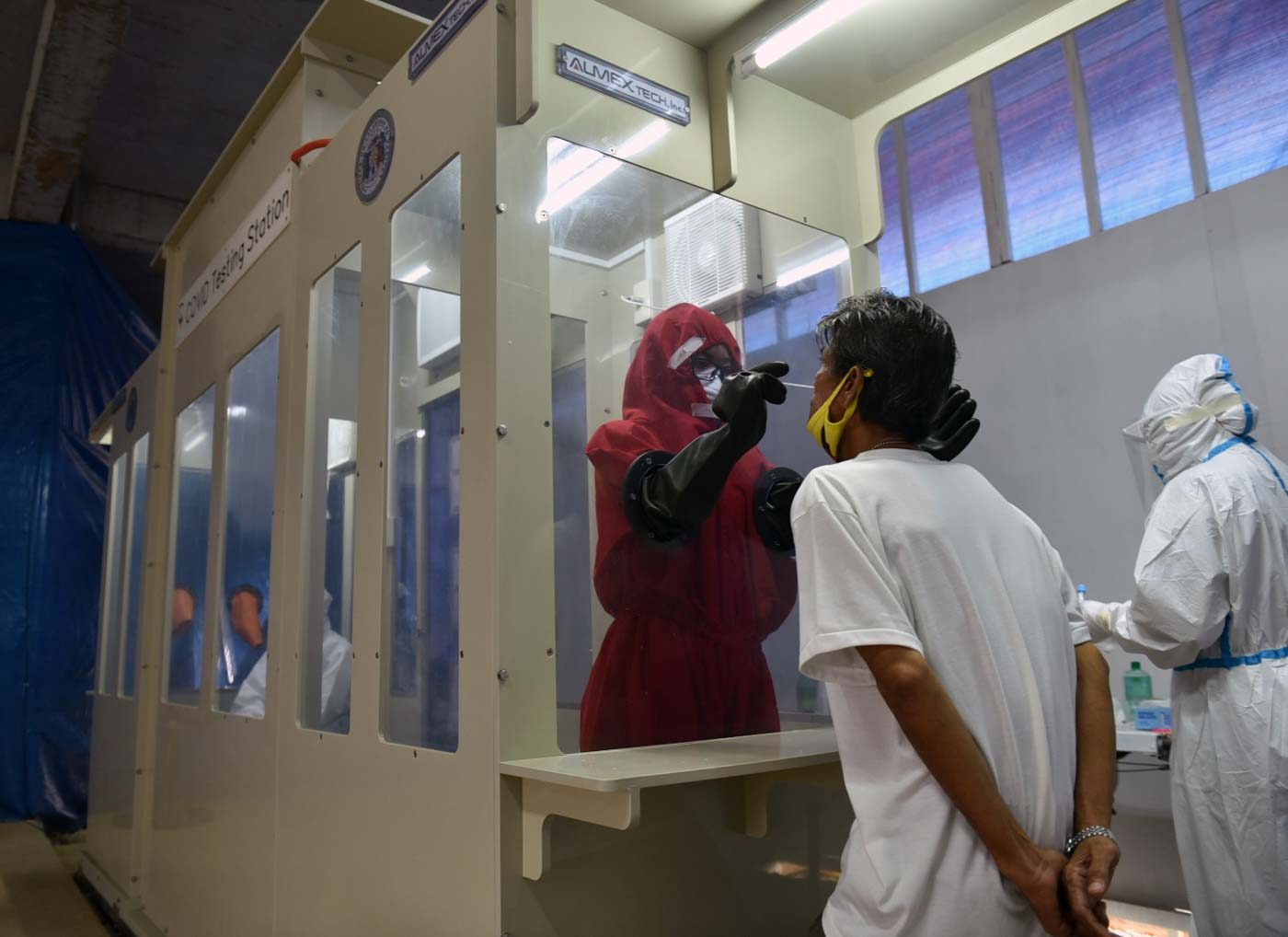SUMMARY
This is AI generated summarization, which may have errors. For context, always refer to the full article.

MANILA, Philippines – In an effort to avoid building a backlog of test results, the Department of Health (DOH) put in place a zoning system to manage the processing of specimens collected from suspected coronavirus patients.
DOH Undersecretary Maria Rosario Vergeire touched on this in a briefing on Wednesday, June 10, as she explained the setup was crafted to have licensed government-run laboratories manage specimens for specific regions.
The zoning of sub-national laboratories does not cover private testing laboratories.
Instead, the zoning system is meant to augment the testing capacity of the Research Institute for Tropical Medicine (RITM), which had been designated as the country’s main reference laboratory for coronavirus testing.
“Sa ganitong paraan nakakapagtulungan po ang ating mga laboratoryo upang maiwasan po ang mga backlogs sa ating mga tests, lalo na’t marami po tayong operational issues na hinaharap ang aming mga laboratoryo na hindi naman maiiwasan,” Vergeire said on Wednesday.
(This way laboratories are able to help each other lessen the backlogs from tests, especially as they face operational issues that are unavoidable.)
Prior to this, most test samples were sent to RITM early in the outbreak, causing a backlog in the processing of test results. The testing center also had to scale down its operations after 43 of its employees tested positive for COVID-19 last April.
Here’s what you need to know about the DOH’s zoning system for sub-national laboratories based on Department Order No. 2020-0188.
How it works: Under the zoning system, licensed DOH-owned laboratories will receive and process specimens for a region or specific areas.
Along with RITM, sub-national laboratories and the University of the Philippines-National Institute for Health receive specimens from hospitals and other disease reporting units within their assigned areas.
Here are assigned zones for each of the 9 sub-national labs:
Baguio General Hospital and Medical Center
- Ilocos Region
- Cagayan Valley
- Cordillera Administrative Region
Lung Center of the Philippines
- Central Luzon
- Pasig
- Marikina
- Quezon City
- San Juan
- Rizal
San Lazaro Hospital
- Caloocan
- Malabon
- Navotas
- Valenzuela
- Palawan
Research Institute for Tropical Medicine
- Muntinlupa
- Parañaque
- Las Piñas
- Taguig
- Pateros
- Pasay
- Makati
- Laguna
- Batangas
- Quezon
- Occidental Mindoro
- Oriental Mindoro
- Marinduque
- Romblon (Tablas Island, Romblon island, Sibuyan Island)
Vicente Sotto Memorial Medical Center
- Central Visayas
- Eastern Visayas
Southern Philippines Medical Center
- Zamboanga Peninsula
- Northern Mindanao
- Davao
- Soccsksargen
- Caraga
- Bangsamoro Autonomous Region in Muslim Mindanao
Western Visayas Medical Center
- Romblon (San Jose municipality)
- Palawan (Cuyo, Agutaya and Magsaysay municipalities)
- Western Visayas
Bicol Regional Diagnostic and Reference Laboratory
- Bicol
UP National Institutes for Health
- Manila
- Mandaluyong
- Cavite
Under the guidelines, specimens must directly be referred to their designated sub-national region. The distribution gives a sense of the load of samples each sub-national laboratory may need to process depending on the number of areas they cater to.
Sending specimens outside the assigned zone is not allowed, the DOH said, unless the designated sub-national laboratory cannot receive or handle the testing “due to any circumstance” such as PCR machines breaking down, or lack of supplies.
In this case, the DOH said specimens can be sent to the nearest DOH-licensed COVID-19 laboratory for testing after proper coordination.
DOH-licensed laboratories are also required to prioritize the testing of healthcare workers and high-risk patients, following guidelines under the government’s expanded testing program. (READ: When you need to get tested for coronavirus – or not)
What happens after? All laboratories must report results of samples tested to the following for validation:
- DOH
- Hospital or facility where samples came from
- Regional Epidemiology and Surveillance Unit
- RITM
The Philippines currently has 55 licensed laboratories, including 41 licensed laboratories for reverse transcription polymerase chain reaction tests and 14 Gene-Xpert laboratories. (READ: Where are testing centers for coronavirus in PH?)
As of Wednesday, the Philippines recorded 23,732 confirmed coronavirus cases, including 1,027 deaths and 4,895 recoveries. – Rappler.com
Add a comment
How does this make you feel?
There are no comments yet. Add your comment to start the conversation.